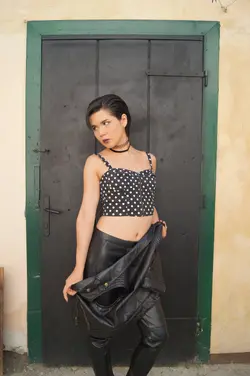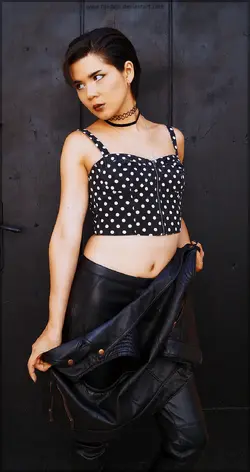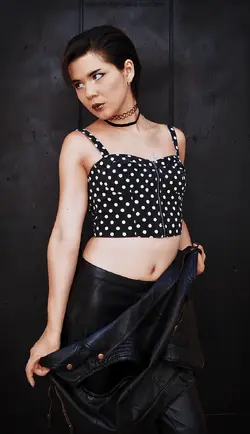I have a few recommendations for making fashion images. First, find a team to collaborate with. A wardrobe stylist is essential for fashion photography. If you have a friend with impeccable style and a large wardrobe, perhaps they can be your stylist as well. A good makeup and hair artist is essential as well. Model Mayhem is a good place to start for sourcing makeup, hair and wardrobe if you are just starting out.
If you want better models, contact modeling agencies in your area and ask if you can test shoot with their new faces. When contacting an agency, it's good to already have a mood/concept board put together to send with your email. In general it's always best to have a concept for your fashion shoots. Learn about mood boards and start making them for your shoots.
A great resource that I have found is the "Photographer Shoot-off: Lara Jade VS Joey L" DVD, which will give you tons of inspiration, as well as teach you some really amazing retouching techniques. As well, the CreativeLive "Fashion Photography 101 with Lara Jade" is another great resource; Lara goes over everything from contacting agencies and casting models, creating moodboards and concepts, putting together a good team, lighting techniques, retouching, working with magazines and other clients and tons of other really helpful topics regarding fashion photography.
As far as lighting goes, you don't NEED studio lighting, reflectors, etc, unless you really want it. A little bit of light can go a very long way. Just keep the concept of contouring in mind when you are using light to sculpt your model and you will be fine (in my opinion). I wrote a shot article going over the concept here:
Portrait Lighting | Photography Forum
Also, set your standard to a very high point when it comes to finding your inspiration. Study the works of great photographers and model your own work after theirs. Some good examples are Michael Thompson, Annie Leibovits, Richard Avedon, Lara Jade, Irving Penn, Mario Testino, and pretty much ANY photographer represented by Jed Root:
Jed Root - Photographers . Study their lighting and editing, their compositions, and even take note of what their models look like. Models with interesting and strong bone structure are usually the ones who get cast; simply being pretty isn't enough to make a strong model.
It's always good to keep up with fashion trends as well; here are a couple of good resources:
http://fashionista.com/
Fashion Gone Rogue | Latest in Models, Fashion and Editorials
I hope this is helpful to you.


















![[No title]](/data/xfmg/thumbnail/41/41889-81d59d4994c91e71aaf805b05b133966.jpg?1734176241)